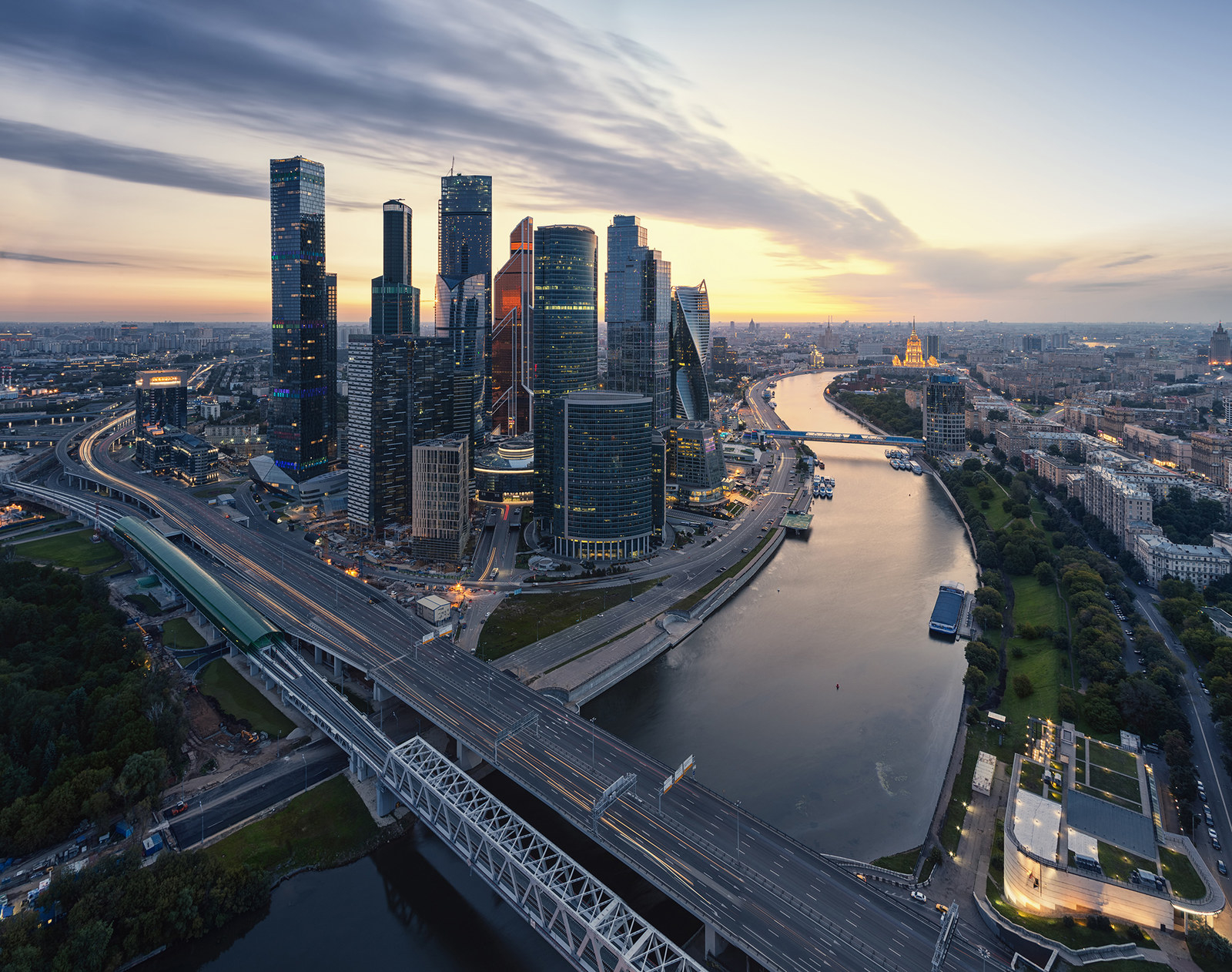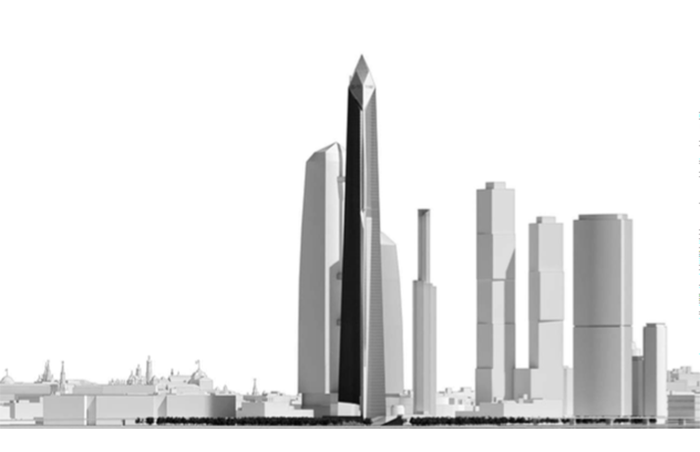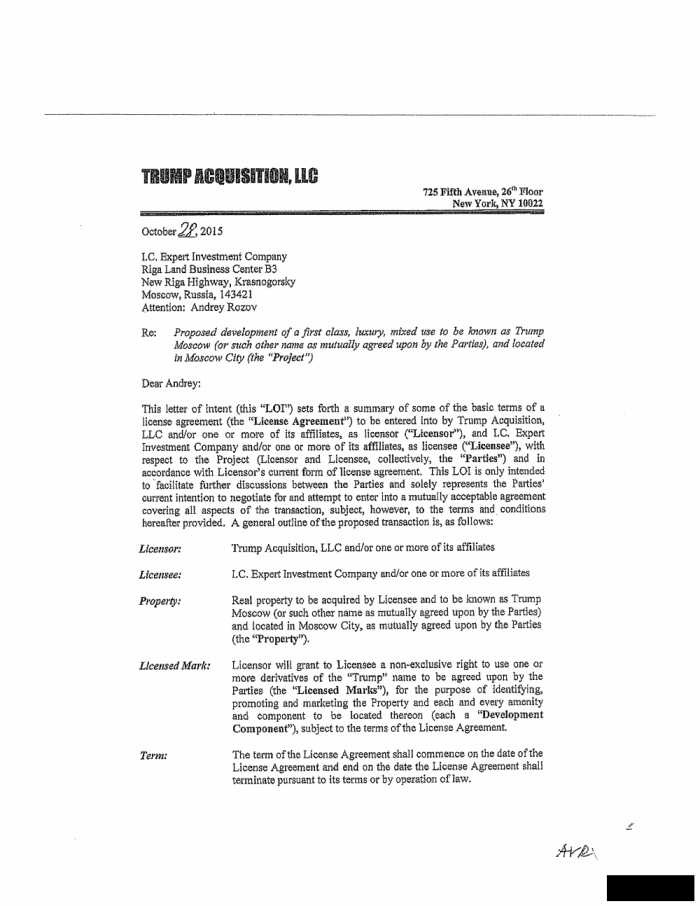
The plan was dazzling: a glass skyscraper that would stretch higher than any other building in Europe, offering ultra-luxury residences and hotel rooms and bearing a famous name. Trump Tower Moscow, conceived as a partnership between Donald Trump’s company and a Russian real estate developer, looked likely to yield profits in excess of $300 million.
The tower was never built, but it has become a focal point of the investigation by special counsel Robert Mueller into Trump’s relationship with Russia in the lead-up to his presidency.
The president and his representatives have dismissed the project as little more than a notion — a rough plan led by Trump’s then-lawyer, Michael Cohen, and his associate Felix Sater, of which Trump and his family said they were only loosely aware as the election campaign gathered pace.
On Monday, his lawyer, Rudy Giuliani, said “the proposal was in the earliest stage,” and he went on to tell the New Yorker that “no plans were ever made. There were no drafts. Nothing in the file.”
However, hundreds of pages of business documents, emails, text messages, and architectural plans, obtained by BuzzFeed News over a year of reporting, tell a very different story. Trump Tower Moscow was a richly imagined vision of upscale splendor on the banks of the Moscow River.
A long-held dream
Trump had for 30 years tried to extend his real estate empire to Moscow. He even wrote about it in his book The Art of the Deal. But he never found the right opportunity — until 2013, when he visited Russia to host the Miss Universe pageant. “TRUMP TOWER-MOSCOW is next,” he tweeted after the event.
Want to support more reporting like this? Become a BuzzFeed News member today.
The tallest skyscraper in Europe
Two years later, a vision had emerged. Trump Tower Moscow was to be much more than just another upscale apartment building. It was to be a vast — and vastly lucrative — undertaking that would elevate the Russian capital’s skyline and extend the perimeter of the New York developer’s influence.
By September 2015, a New York architect had completed plans for a bold glass obelisk 100 stories high, to be topped by a gleaming, cut-diamond–like shape emblazoned on multiple sides with the Trump logo.
“The building design you sent over is very interesting,” the Russian real estate developer Andrey Rozov wrote to Cohen in September 2015, “and will be an architectural and luxury triumph. I believe the tallest building in Europe should be in Moscow, and I am prepared to build it.”
“First class luxury”

According to a finalized letter of intent signed by Donald Trump on Oct. 28, 2015, the tower would have “approximately 250 first class, luxury residential condominiums.”
It would be located in Moscow City, a former industrial complex outside of the city center that has since been converted into an ambitious commercial district clustered with several of the tallest skyscrapers in Europe.
Its hotel portion would feature “approximately 15 floors” and contain “not fewer than 150 hotel rooms,” the letter of intent stated. The building would feature a luxury spa and fitness center, a commercial component “consistent with the overall luxury level of the Property,” and an office space “consistent with Class A luxury office properties,” as well as “luxury” parking.
Spa by Ivanka

As with most of Trump’s other big real estate ventures, the plan was for a local developer — Rozov — to build Trump Tower Moscow. Trump’s team would provide the glittering name and would manage the building’s operations, such as restaurants and bars.
The Trump team would also have the option to “brand all or any portion of the spa or fitness facilities” as “The Spa By Ivanka Trump,” according to the plans. If they exercised that option, Ivanka or one of her representatives would choose all interior design elements for the spa and health club.
Other Spas by Ivanka Trump offer a clue as to what it might have looked like. At the Trump International Hotel in Washington, DC, the 10,000-square-foot spa and fitness center offers “a carefully orchestrated spa experience” designed to produce “a fresh, authentic and purposeful visit.” Guests are invited to enjoy “an immersion lounge, reflective of local culture and craftsmanship,” specialized massage treatments called “curated rituals,” “aspirational quotes,” a Himalayan salt chamber, a waterfall, and hallways, curtains, and floors in her signature color of rose gold.
Putin’s perks

The top residence of the Moscow tower, enjoying a view without equal in all the continent, was to be a gleaming penthouse, the most luxurious property in a seriously luxurious building.
A show-stopping apartment like that could have been marketed for $50 million. But as BuzzFeed News reported in November, Trump’s fixers planned not to sell it — but to give it away for free, to none other than Vladimir Putin himself. Two US law enforcement officials confirmed that Cohen discussed the idea with an aide to Putin’s press secretary.
The hope was that the lavish gift would help grease the wheels, and in the process entice more Russian elites to move in. “My idea was to give a $50 million penthouse to Putin and charge $250 million more for the rest of the units,” Felix Sater told BuzzFeed News in November. “All the oligarchs would line up to live in the same building as Putin.”
An eye on the bottom line
The plans included detailed financial arrangements. According to the signed letter of intent, Trump’s company would get a $4 million up-front payment — a quarter when the licensing agreement was executed, another quarter when they finalized a location for the tower, and the other half either a week before the project’s groundbreaking or two years after the execution of the licensing agreement, whichever came first.
From there on out, Trump’s company would also get a cut of all the condominium sales at the tower, the agreement stated. From the total selling price of each unit, his company would get 5% for sales up to $100 million, 4% for the next bracket up to $250 million, 3% for anything between that and $500 million, 2% for anything up to $1 billion, and thereafter, a solid cut of 1%. For commercial and office spaces, it would get a 3% cut of all the rent. It’d get another 3% of sales on food and beverages, spa and fitness center use, and conference fees.
The deal also stipulated how much Trump’s management company would get paid for running operations at Trump Tower Moscow over 25 years. For the first five years, it would get 3% of all revenue generated by operating the hotel per month. Over the next two decades, it’d receive a flat 4%. In addition, the management company would also receive a monthly “incentive fee” — an additional 20% of the gross operating profit for the hotel — subject to annual negotiations.
The Trump Organization did not respond to a request for comment on this story, nor did Giuliani, Rozov, Ivanka Trump, or the White House. A spokesperson for the special counsel declined to comment.
Frequent updates
Trump has many times denied having any business interests in Russia. But last year, BuzzFeed News revealed that negotiations over the tower lasted at least through June 2016, just a few weeks before Trump clinched the Republican nomination. The special counsel has since confirmed this fact, saying in a court filing that Cohen discussed the plan multiple times with the Trump Organization and asked Trump and a senior campaign staffer about traveling to Russia.
Last November, Cohen pleaded guilty to lying to Congress about when the deal ended. Trump then struck a new note, defending his involvement in the Moscow project during the election: “There was a good chance that I wouldn’t have won,” he told reporters, “in which case I would have gotten back into the business, and why should I lose lots of opportunities?”
BuzzFeed News reported on Thursday that Trump received at least 10 updates about the plans, and then directed Cohen to lie to Congress about when those negotiations ended in order to obscure his own involvement. Mueller’s office issued a statement Friday saying that “BuzzFeed’s description of specific statements to the Special Counsel’s Office, and characterization of documents and testimony obtained by this office, regarding Michael Cohen’s Congressional testimony are not accurate.” BuzzFeed News stands by its story and the two law enforcement sources who informed it.
Giuliani has since acknowledged the plan went on longer than previously stated. “It’s our understanding that it — that they went on throughout 2016,” Giuliani told CNN. “Weren’t a lot of them, but there were conversations. Can’t be sure of the exact date. But the president can remember having conversations with him about it.”
He then told the New York Times that Trump remembers discussing the project with Cohen up until November 2016, when Trump was elected president. “It was all going from the day I announced to the day I won,” Trump said, according to Giuliani.
He has since backtracked, stating that his comments on Trump Tower Moscow were “hypothetical and not based on conversations I had with the president.”
A great lifetime goal

Sadly for luxury-loving Muscovites, the tower project never came to be. It’s not entirely clear why the deal fell through, but today on the bend of the Moscow River, on the edge of the Presnensky District and only a few miles from the Kremlin, there is no Ivanka-branded salt chamber and no Trump-approved luxury parking.
By the time Donald Trump signed the project’s letter of intent, he was four months into his presidential campaign — running for the highest office in America while conducting private business negotiations with a hostile nation.
Today that choice has produced controversy and possible legal risk. But back then, it seemed to be pure upside.
“Let’s make this happen and build a Trump Moscow,” Sater wrote to Cohen shortly beforehand. “And possibly fix relations between the countries by showing everyone that commerce & business are much better and more practical than politics. … Help world peace and make a lot of money, I would say that’s a great lifetime goal for us to go after.”

Anthony Cormier, Jason Leopold, Tanya Kozyreva, and Chris Geidner contributed to this story.

